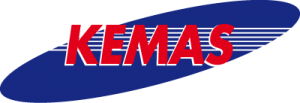INTRODUCTION
The restructuring of the Community Development Department (KEMAS) on 19 January 2015 led to the rebranding of the Public Relations Division to the Policy and Strategic Planning Division. The Policy and Strategic Planning Division (DRS) is a new division in KEMAS as a result of the strengthening and enhancement of the functions of the Public Relations Division as well as the realignment of planning functions that were previously undertaken by the Planning and Development Division.
This division is responsible for organizing, streamlining as well as strengthening the planning and implementation plan of KEMAS development programmes/ activities in line with the requirements of stakeholders, current needs of the country and target groups. At the same time, the division also serves to strengthen the data collection and distribution system and information from grassroot levels to the government on a periodic and systematic basis. In tandem with the shifting process of political socio-economic change in the country, the approaches and strategies of KEMAS programmes/ activities are implemented according to the needs and requirements of stakeholders and target groups.
FUNCTION
The Policy and Strategic Planning Division (DRS) moves in support of the development and strengthening of rural areas, by planning and implementing data gathering tasks on the socio-political information at grassroot levels in support of the country’s development agenda.
The division consists of six (6) main functions:
- To provide a policy framework and macro strategy for the Community Development Department (KEMAS) which involves links with the preparation of the long-term plan framework and Malaysia’s five-year plan by the Federal Agency (especially the Economic Plan Unit, Prime Minister’s Department) as well as the coordination and demands of MRRD stakeholders.
- To ensure that all planning and implementation of programmes/ projects are implemented according to the set goals and policies.
- To ensure the clarification of policies and strategies of KEMAS and MRRD is understood by the implementers, target groups and other stakeholders of the programme.
- To promote and enhance the involvement of government agencies, private sectors and non-governmental organizations (NGOs) in KEMAS programmes and projects.
- To plan, evaluate and improve the effectiveness of the Department’s programmes whether in-house or out sourcing.
- Provide complete department databases, covering programme and project data for research, planning and evaluation purposes.
- The Policy and Strategic Planning Division has three (3) main sections:
- Policy and Social Development Section
- Strategic Relations Section
- Education Development Section
Policy and Social Development Section
- To provide direction, blueprint and roadmap of the department in the long, medium and short term period
- To prepare and coordinate the main policies of the department
- To assess and review in providing added value on the KEMAS programmes that are being implemented for it to remain relevant
- To coordinate the calendar of programmes / activities of the department
- To prepare and coordinate the Policy Paperwork and Cabinet Papers
- To coordinate and monitor the provisions of Key Performance Indicators (KPIs) of KEMAS
- To prepare, coordinate and manage the department’s key meetings (including Policy Committee Meetings, Post-Cab Meetings)
- To coordinate feedbacks regarding Cabinet Ministers and key meetings
- To formulate modules and Standard Operating Procedures (SOPs) of social development programmes
- To draft the National Blue Ocean Cooperation Strategy (NBOS) with departments, agencies and NGOs
- To draft and prepare explanations of policies and current issues
Strategic Relations Section
- To plan, coordinate and monitor the implementation of data and information collection activities
- To prepare reports every three months which serve as data banks for use by the department and other divisions
- To coordinate and collect area profile reports
- To coordinate and collect information for the local leaders directory
- To collect and prepare reports on current issues (people’s complaints) on a regular basis
- To conduct field studies regarding any particular issue
Education Development Section
- To draft, prepare training modules and workshops to train 17,998 KEMAS members, Chairmen and members of JKKK/P, KEMAS activity committee and IPTA/ IPTS students
- To plan and carry out workshops, training seminars to the Chairmen and members of JKKK/P, KEMAS activity committee and IPTA/ IPTS students
- To train master trainers and Training of Trainers (TOT) to conduct training, workshops and seminars on the constitution for KEMAS staff, Chairmen and members of JKKK/P, KEMAS activity committee and IPTA/ IPTS students
- To collaborate with government agencies to implement trainings and workshops to IPTA/ IPTS students under MRRD and Ministry of Education Malaysia
- To monitor the implementation of workshops and trainings for KEMAS staff at state level
- To conduct an impact assessment on the implementation of trainings and workshops.
DASAR PRIVASI | DASAR KESELAMATAN | PENAFIAN | PETA LAMAN | SOALAN LAZIM | PENERBITAN
Hakcipta Terpelihara © 2023 Jabatan Kemajuan Masyarakat (KEMAS), Kementerian Kemajuan Desa dan Wilayah, Paparan terbaik di Chrome versi 53.0.2785.143, Mozilla Firefox versi 8.0 & IE versi 8.0 dengan resolusi 1366 x 768
Aras 5-9, No 47, Persiaran Perdana, Presint 4, Pusat Pentadbiran Kerajaan Persekutuan, 62100 Putrajaya. Tel: +603-8891 2682 Faks: +603-8888 2312 Emel: info[at]kemas[dot]gov[dot]my

















